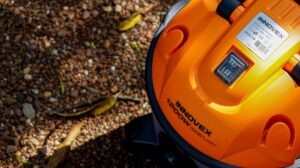
What You Need to Know About Industry-Related Survey Programs
Industry-related survey programs are designed to help businesses understand the needs of their customers. They can be used to identify the size of a market, track the share of a competitor’s market, and determine customer adoption of new products and services. These surveys provide valuable information about customer knowledge, awareness, intent, and repurchase behavior.
Questions to Ask
When using survey programs like California industry-related survey programs, you should focus on specific questions. These questions can help you make more informed decisions. The trick is to create questions that are specific but also easy to answer. You should ensure you write questions that are easy to answer, rather than asking for personal information, because this discourages respondents. Of course, some personal data is necessary for research purposes, but it is better to ask for this at the end of the survey.
One classic question is, “Would you recommend my product to a friend?” Most people trust customer referrals more than advertising. Therefore, a company that can generate leads from satisfied customers will likely have a higher chance of success.
Sample Size
In conducting surveys, the sample size is an essential factor. For example, you can’t survey the entire population of a country or industry; you need to reach a small portion of the people to obtain statistically significant results. You should choose a larger sample size to divide the results into sub-groups.
The sample size for industry-related survey programs is the proportion of firms that completed a questionnaire. For example, the sample size for the SBO in 2012 was 1.75 million. In 2007, the response rate was 62 percent. In 2012, it was 69.4%. The break-off rate was 2%, and the margin of sampling error was 1.8 percentage points.
Data Analysis
Companies need every edge they can get, and data analysis is essential. With everything from changing political landscapes to finicky consumer attitudes to global pandemics, companies need to know what their customers want and need. Data analysis tools can help businesses make better decisions and increase customer retention.
There are several methods for analyzing survey data. One common approach is factor analysis. This technique helps reduce a large dataset into a few logical factors. It identifies underlying constructs, such as expectations, and compares the results with those expectations. This type of analysis can also help uncover hidden patterns and explore concepts that are difficult to measure.
Impact on Business Practices
In the business world, industry-related survey programs can dramatically impact a company’s operations. They can help companies reduce risk and improve employee and customer relations, marketing, and communications. However, the success of these surveys depends on how well they satisfy the respondents. To develop successful surveys, a company must decide how to help the respondents and how it can improve its operations.
The results of industry-related survey programs can be highly insightful, mainly when advanced statistical analysis is applied. In the past, conducting surveys was complicated and expensive, but new technologies and increased processing power have made this process much more manageable. Moreover, communications costs have decreased.
Cost
Industry-related survey programs can range widely in price, depending on several factors. These factors include the type of survey and the communication method. The more respondents a survey requires, the higher the cost. Also, the incidence rate, or the number of surveys needed to get a response, will affect the cost. For example, a telephone survey can cost between $5,000 and $15,000, depending on the number of respondents and the response rate.
Industry-related surveys allow businesses to understand their customer base, preferences, and habits. This information can be used to improve operations, adjust the onboarding process, increase sales, and reduce costs. Additionally, they can be used to identify potential product development opportunities. In addition, these surveys can act as a baseline for comparing results over time.


















